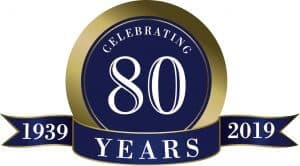Written by Peter Kennedy, Director, for The Delaware Business Times
Who carries cash anymore? A Bankrate.com survey from several years ago found that 78% of Americans carry less than $50 cash, with 10% carrying no cash at all. According to survey results posted on Creditcards.com, in 2014 – 78% of Americans made their purchases primarily with either credit or debit cards, only 9% used cash primarily.
Similarly, more and more, entities of all sizes are turning to credit cards as the primary means of bill paying. Yes, bill paying has come a long way in the past 20 years. There are some of us who still remember the phrase “PRESS HARD, YOU ARE MAKING 5 COPIES”; when the invoice, purchase order and receiving document all had to be matched in order to generate a payment. Obviously, there was room for efficiency in that process. Replacing paper checks with plastic as a means of bill paying can be a big time-saver as long as the controls around the bill paying process don’t go the way of the Goldenrod copy.
Keep in mind when constructing (or revisiting) controls around a credit card or on-line bill pay program, that it is replacing a process with a series of controls developed over many years of experience.
So what would be the essentials? First, a written cardholder agreement would be a good idea. It should state that: being a cardholder is a privilege; that the card is for official use only; that the card should only be used for approved business expenses; that charges must be substantiated through documentation (invoices & receipts) on a timely basis; that unsubstantiated charges must be immediately reimbursed and that infractions to the agreement could be grounds for discipline, from revocation of cardholder privileges up to and including dismissal for deliberate misuse or fraud.
Next – the use of card limits is an excellent chance to “sync” the previous control system with the new one. Did an employee have authority to approve an expenditure up to $500? Set that as the per-charge limit on the card. Be parsimonious with card limits. All banks that I am familiar with will allow you to raise a limit over the phone if the need arises. Unnecessarily high card limits = unnecessary exposure.
The job of obtaining the documentation to substantiate credit card charges is a thankless but necessary one. Every organization needs a “hammer” – someone who will fearlessly enforce the credit card policy’s terms for employees / card holders high and low. Without a ruthlessly enforced process for all employees, any efficiencies gained through replacement of the paper check process will be quickly lost as the accounting department chases down the receipt-challenged problem children. High-ranking employees must set the standard with this process. Those in the upper ranks disregarding and flouting even minor controls such as these can have a corrosive effect on the control environment throughout an organization.
The Navy has a slang word; “Gundecking”. It generally means intentionally blowing off a required process or appearing to perform an action but not actually doing it with the intended thoroughness. The term allegedly arose from the days of sail where Midshipmen were required to perform complex celestial navigation calculations using a sextant and fixing the elevation of stars at specific points in time to determine the ship’s exact location when beyond sight of land. Since Midshipmen were generally teenaged boys and since the calculations were painstaking and were often required to be done in the middle of the night, it is not surprising that often the calculations were actually falsified / performed on the Gun Deck (sleeping quarters).
Be aware of weak points in the process. Generally, people in the Business Office can be counted on to follow controls with requisite diligence. But the further removed from the Business Office, the greater the chance that the controls considered so vital to maintaining accountability and preventing fraud will be blown off or “gundecked”. Particularly with credit cards, once word of the failure of controls gets around an organization, it is wide open for fraud.
Can a credit card system be used as a primary means of bill paying? Absolutely, but be attuned to the risks involved. Basic controls must be established and they must be consistently and diligently followed or trouble may ensue.

